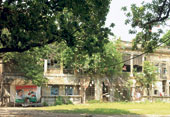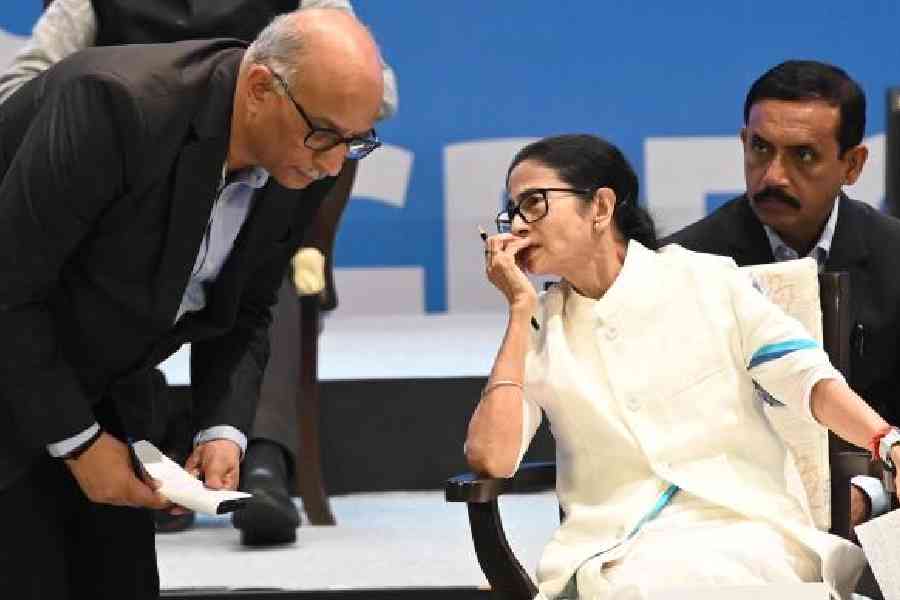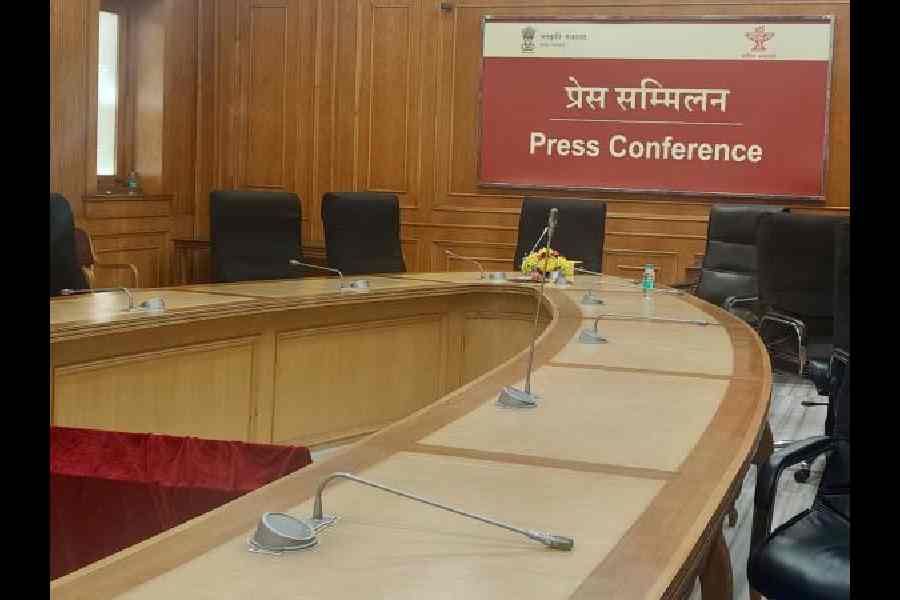 |
| The mansion of the Nawab of Murshidabad on Park Street. Picture by Pabitra Das; (below) the mansion as it was |
 |
Park Street is fast turning into a road of highrises that look as unlovely as they are obstreperous, even if the latter adjective does not really apply to buildings. But it is undeniable that these highrises — each a mini-township — add to the chaos and noise of Calcutta’s clogged streets. Park Street as it was is hidden behind high walls and screened by the still surviving trees that grew around the mansions. Promoters will ensure the destruction of the remaining mansions so that they can happily continue their building activity on this and other invaluable properties.
One mansion that for years remained concealed behind high walls is the one that belonged to the Nawab of Murshidabad. It used to have two masonry gates that had been crumbling for years. Now one of them has disappeared altogether, revealing a vast lawn and the house with two wings and verandahs running from one end of the house to the other on both floors. The remains of the second gate support a notice board declaring that it is the property of the government of West Bengal (judicial department) Murshidabad estate.
The property has been in status quo for more than a century. It has been taken over by squatters. The descendants of Nawab Nazir Mir Zafar Meerza, the first puppet ruler of the British, used to live here. To most Bengalis Mir Zafar is still the archetype of treachery, whereas Nawab Siraj-ud-Dowlah has been turned into a tragic hero and Waterloo Street has been renamed after him. The last living descendant of Mir Zafar who lived here was Sajid Ali Meerza, whose father was Wasif Ali Meerza, the second and last nawab of Murshidabad. Nobody knows for sure, but it is said that the house was confiscated to compensate for the Murshidabad royal family’s revenue dues.
An old photograph shows that the building’s projecting bay, like the first floor verandah, was shaded with wooden jalis. Now instead of the bay there is a gaping hole in the wall and the face of the building resembles a grinning skull. As in Clive House in Dum Dum, squatters have turned the space inside the mansion and the yard behind it into a shantytown from Bihar, complete with tiny mud huts. Even the porch, yard and wooden staircase have been neatly partitioned into abodes.
But it is not as if only poor people live here. Some rooms are occupied by people who use these as workshops where cottage industries thrive. Saris, for example, are embroidered here. But a gaping hole has developed in the marble on the first floor in the section that is projecting. The condition of the building is deteriorating by the day and no measure has been taken to stop this.
Although this vast and valuable property is under the protection of the judicial department of the state government, such is the clout of the developers’ lobby in this state that they stop at nothing. And get away with it. Dunlop House in Park Street close by was demolished although there was a move to resist it. And as the photograph makes adequately clear, a political party has decided to move into the grounds.
Last year, G.M. Kapur, state convenor/governing council member, Intach, had written to the high court chief justice drawing his attention to the condition of the building. It was forwarded to the principal secretary, judicial affairs department of the state government. Kapur is yet to receive a reply.











